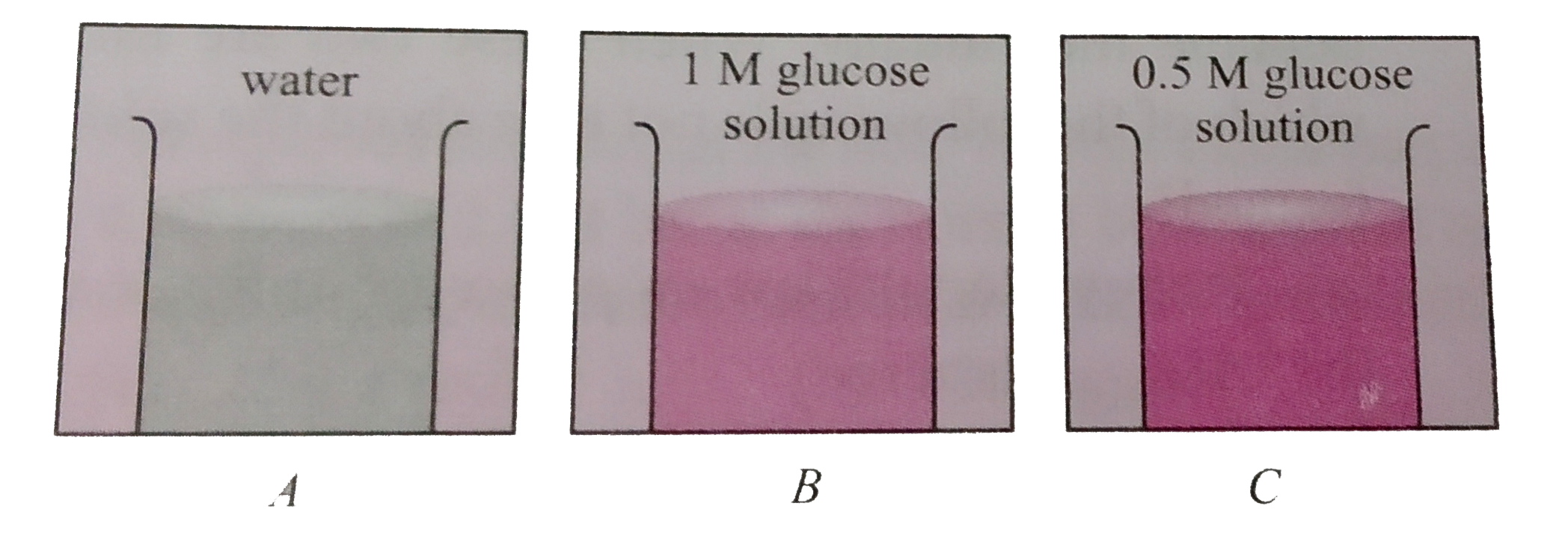Three beakers labelled as A, B and C each containing 25 mL of water were taken. A small amount of NaOH, anhydrous CuSO4 and NaCl were added to the beakers A, B and C respectively. It was observed that there was an increase in the temperature of the solutions contained in beakers A and B, whereas in case of beaker C, the temperature of the solution falls. Which one of the followig statement (s) is (are) correct?
1. In beakers A and B, exothermic process has occurred.
2. In beakers A and B, endothermic process has occurred.
3. In beaker C, exothermic process has occurred.
4. In beaker C, endothermic process has occurred.
Only 1
Only 2
1 and 4
2 and 3
The correct Answer is:C
To solve the problem, we need to analyze the observations made in each beaker and determine whether the processes occurring are exothermic or endothermic.
1. Identify the substances in each beaker:
- Beaker A: Contains NaOH (sodium hydroxide).
- Beaker B: Contains anhydrous CuSO4 (copper(II) sulfate).
- Beaker C: Contains NaCl (sodium chloride).
2. Analyze the temperature changes:
- In beakers A and B, there is an increase in temperature.
- In beaker C, there is a decrease in temperature.
3. Determine the type of reactions:
- Exothermic Reaction: This is a reaction that releases energy in the form of heat, leading to an increase in temperature.
- Endothermic Reaction: This is a reaction that absorbs energy, resulting in a decrease in temperature.
4. Apply the definitions to the observations:
- For beakers A and B (where temperature increased):
- Since the temperature increased, we conclude that an exothermic process occurred in both beakers A and B.
- For beaker C (where temperature decreased):
- Since the temperature decreased, we conclude that an endothermic process occurred in beaker C.
5. Evaluate the statements:
- Statement 1: In beakers A and B, exothermic process has occurred. (True)
- Statement 2: In beakers A and B, endothermic process has occurred. (False)
- Statement 3: In beaker C, exothermic process has occurred. (False)
- Statement 4: In beaker C, endothermic process has occurred. (True)
Conclusion:
The correct statements are:
- Statement 1 is correct.
- Statement 4 is correct.
Thus, the correct answers are statements 1 and 4.
- Beaker A: Contains NaOH (sodium hydroxide).
- Beaker B: Contains anhydrous CuSO4 (copper(II) sulfate).
- Beaker C: Contains NaCl (sodium chloride).
- In beakers A and B, there is an increase in temperature.
- In beaker C, there is a decrease in temperature.
- Exothermic Reaction: This is a reaction that releases energy in the form of heat, leading to an increase in temperature.
- Endothermic Reaction: This is a reaction that absorbs energy, resulting in a decrease in temperature.
- For beakers A and B (where temperature increased):
- Since the temperature increased, we conclude that an exothermic process occurred in both beakers A and B.
- For beaker C (where temperature decreased):
- Since the temperature decreased, we conclude that an endothermic process occurred in beaker C.
- Statement 1: In beakers A and B, exothermic process has occurred. (True)
- Statement 2: In beakers A and B, endothermic process has occurred. (False)
- Statement 3: In beaker C, exothermic process has occurred. (False)
- Statement 4: In beaker C, endothermic process has occurred. (True)
The correct statements are:
- Statement 1 is correct.
- Statement 4 is correct.
Similar Questions
Knowledge Check
- Question 1 - Select One
Steam is passed through the water contained in a beaker. The water can boil, when the steam is at
Aatmospheric pressureBpressure height than the atmosphereCpressure lower than the atmosphereDany pressure
In three beakers labelled as (A),(B) and (C ) , 100 mL of water, 100 mL of 1 M solution of glucose in water and 100 mL of 0.5 M solution of glucose in water are taken respectively and kept at same temperature .

Which of the following statements is correct ?View SolutionA student heats a beaker containing ice and water. He measures the temperature of the content of the beaker as a function of lime. Which of the following would correctly represent the result ? Justify your choice .
 View Solution
View SolutionInitially , a bearker has 100 g of water at temperature 90∘C Later another 600 g of water at temperatures 20∘C was poured into the beaker. The temperature ,T of the water after mixing is
View SolutionA dilute ferrous sulphate solution was gradually added to the beaker containing acidified permanganate solution. The light purple colour of the solution fades and finally disappears. Which of the following is the correct explanation for the observation?
View SolutionEqual masses of three liquids A,B and C are taken. Their initial temperature are 10∘C,25∘C and 40∘C respectively. When A and B are mixed the temperature of the mixutre is 19∘C. When B and C are mixed, the temperature of the mixture is 35∘C. Find the temperature if all three are mixed.
View Solution3.42 g of sucrose are dissolved in 18g of water in a beaker. The number of oxygen atoms in the solution are
View SolutionWe have three beakers A , B and C containing glycerine, water and kerosene respectively. They are stirred vigorously and placed on a table. The liquid which comes to rest at the earliest is
View Solution

